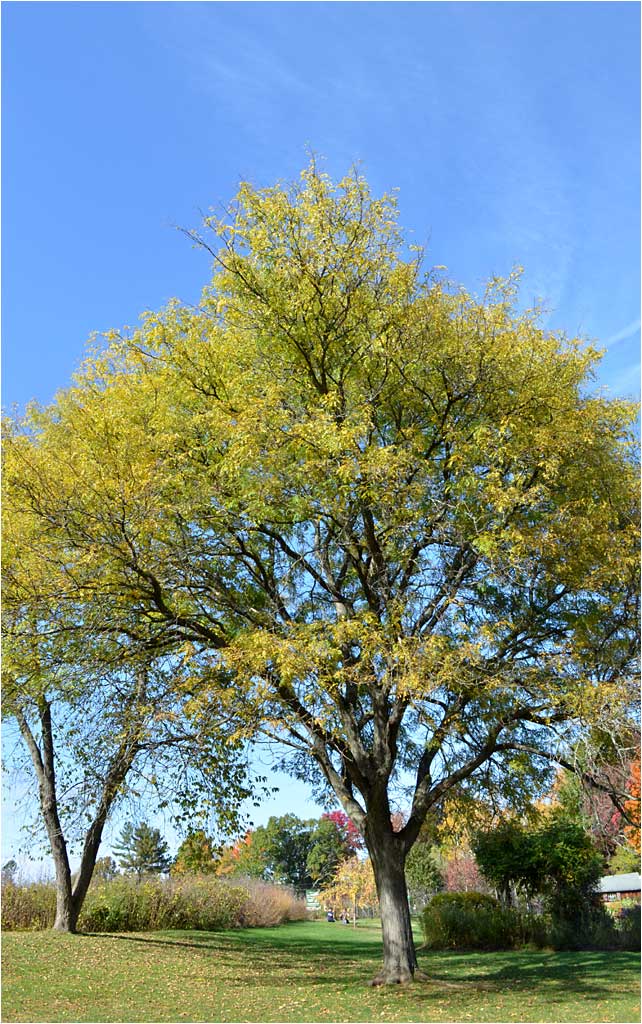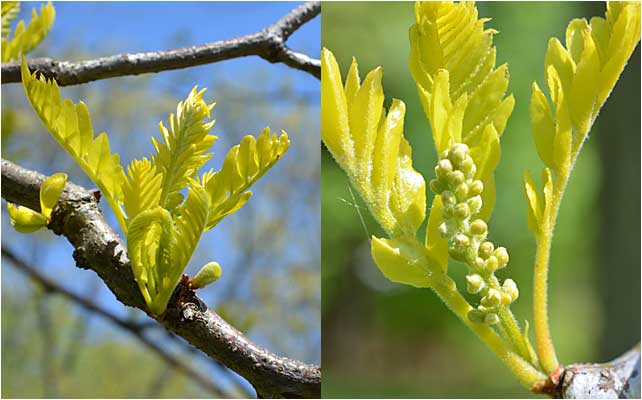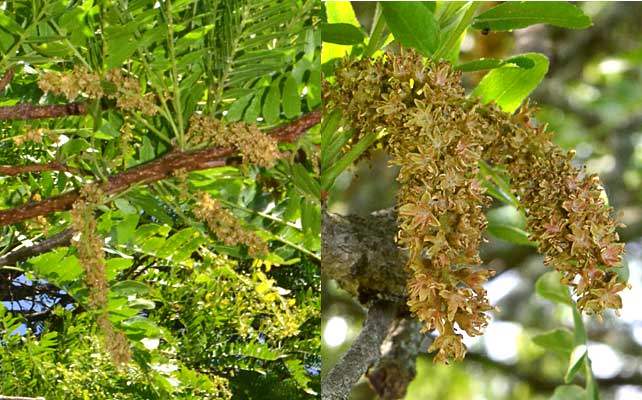33. HONEY LOCUST
Gleditsia triacanthos

The Honey Locust is a native U.S. tree with wide distribution. This tree is deciduous (drops its leaves every year) and polygamo-dioecious. This means that the trees are largely divided into males and females, but there may be some perfect flowers (flowers with male and female parts) on each tree. This tree is primarily male. A closer look at the bright green color in Spring...
SPRING, LEAF AND FLOWER (MALE)

The early Spring leaves of Honey Locust actually unfurl from the leaf bud (left) and in some cases include the emerging male flowers (right). These are called catkins because as they mature they look like a kitten's tail. The actual flowers are tiny, and each flower bud is one of the little spheres protruding from the stem.
SPRING, MALE FLOWERS

You will see numerous clumps of these catkins (left) on male Honey Locust trees - enough to actually stand out against the emerging green leaves. Close-up of two catkins (right).
SUMMER FOLIAGE

The Honey Locust prefers (actually demands) full sun - it does not do well in partial shade. This tree's position in our central meadow (and next to the Wildflower Meadow) provide a perfect habitat for it. Honey Locusts (also called Thorny Locusts) are known for their thorns - but actually 10 percent or so of the trees found in the wild are "thornless". The thornless variety has been sold extensively, and is often planted as an urban tree. This one is thornless.
LEAF & BARK

The Honey Locust has a compound leaf (many leaflets on a single stalk called a rachis) and is also pinnately compound - meaning each "LEAF" can be composed of many leaflets joined together. When this happens and 2 leaflets join the main stem at same point, the tree is called bipinnately compound. This is also a feature of the Kentucky Coffee Tree here at the Arboretum. The bark darkens and gets coarser with age, and this specimen is mature.
WINTER

The multiple rachis (stems) of the leaves of the Honey Locust create a fuzzy effect to the tree's branching in winter. The habit of the tree is symmetrical and sturdy - often seen in trees grown in full sun and open "field" conditions. Its wood is quite valuable, dense and highly rot resistant. Native Americans made bows of the wood.